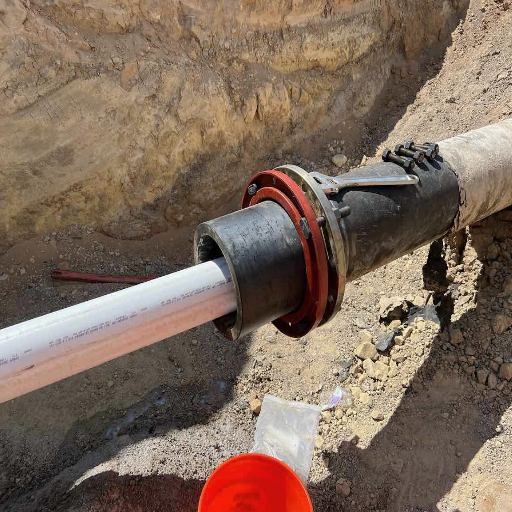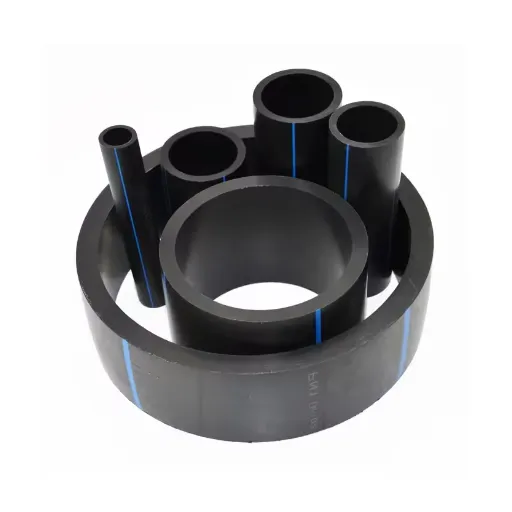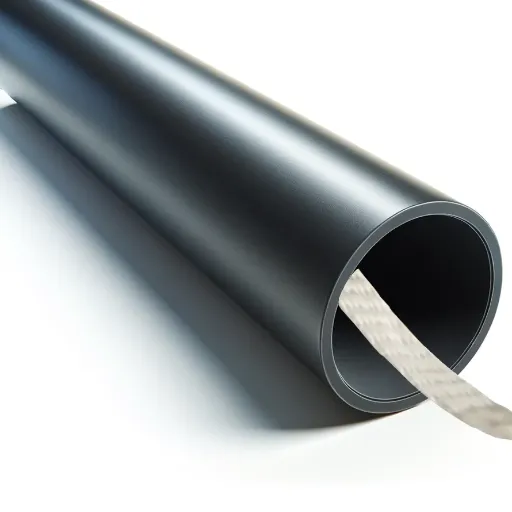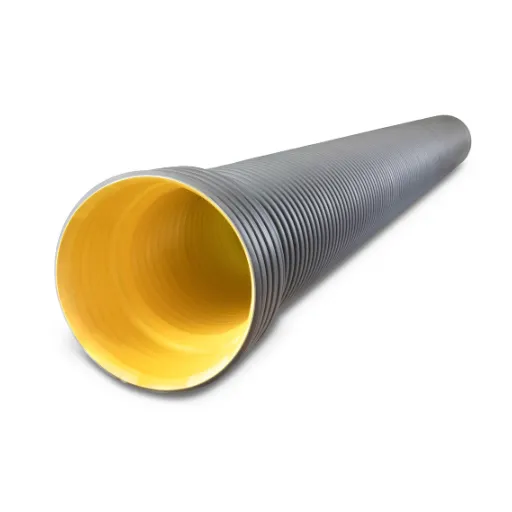Sliplining is a well-established trenchless rehabilitation method widely used in the infrastructure industry to repair and restore aging or damaged pipelines. This innovative technique involves inserting a new pipe, known as the liner pipe, into an existing damaged pipeline to create a new structural pathway. By reducing the need for extensive excavation, slip lining provides a cost-effective, efficient, and environmentally friendly alternative to traditional open-cut methods. This article explores the fundamentals of slip lining, its applications, advantages, and the technical considerations critical to its successful implementation. Readers will gain a comprehensive understanding of how this essential process contributes to maintaining critical pipeline systems with minimal disruption.
What is Sliplining in Pipe Repairs?
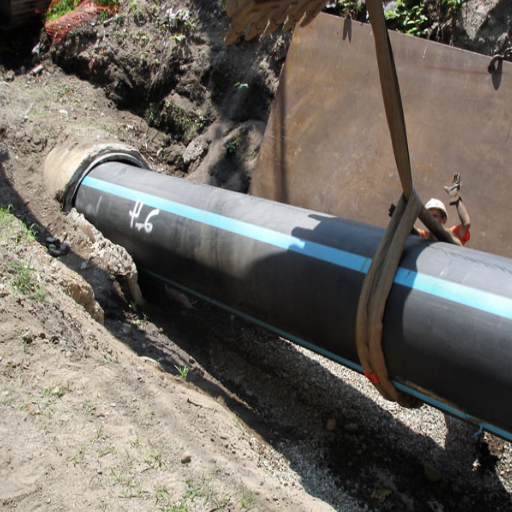
Introduction to Sliplining
Sliplining offers a rejuvenation approach that does not require digging. It replaces the missing structure while also ensuring that the hydraulic efficiency of the pipeline is adequately preserved. This is done by inserting a pipe with a smaller diameter into a host pipe with a larger diameter. Once that is set, the space left between the two pipes is filled with grout to keep the fill in place. The new pipe, also called a carrier pipe, can vary in material, for instance, High-Density Polyethylene (HDPE), PVC, or fusible PVC can be used. The selection relies upon the project’s requirements such as resisting chemicals, flexibility, or even durability.
- Diameter Reduction: Because the carrier pipe has a smaller diameter, the flow capacity is also lowered. Due to this, engineers must calculate the operational requirements to appease the hydraulic performance goals.
- Material Selection: When it comes to selecting the material for the new pipe, joint integrity, structural strength, and thermal and chemical resistance play an enormous role.
- Grouting Material: Long-term effectiveness can only be ensured if the type of grout filling the annular space has adequate bonding strength and chemical stability alongside minimal shrinking.
- Installation Length and Access Points: Access points without obstructions are needed for slip lining. The length also cannot exceed the flexibility of the material as well as the performance of the pushing or pulling equipment.
This approach is particularly beneficial in reducing excavation and disruption work which, in turn, ensures the service life of key pipeline systems is extended while controlling costs and keeping operations running smoothly.
Benefits of Using Sliplining for Pipe Repairs
Sliplining comes with several important benefits that are useful for more common problems of pipeline maintenance. Most importantly, it reduces the need to dig which saves costs related to site restoration. This is especially economical in long-distance pipelines where replacement works can be difficult or very expensive.
Sliplining also enhances the strength of the existing pipelines. This is achieved by placing a new carrier pipe in a damaged host pipe. This method strengthens the structure and allows the pipeline to function optimally at the same time. It results in a major increase in the service life of the pipelines, routinely in the order of several decades.
In terms of its technical characteristics, slip lining is exceptionally versatile. It accommodates different pipe sizes with diameters from 4 inches to over 48 inches, depending on the purpose and requirements of the project. The material of the new liner pipe like high-density polyethylene or PVC, does not corrode or degrade easily making it ideal for different conditions.
The procedure also helps in the optimization of flow. While the new liner pipe slightly reduces a pipe’s internal diameter, it is common that new advances in material design will offset some of that flow capacity loss due to having smoother internal surfaces that can alleviate friction. Furthermore, slip lining is useful for gravity and pressurized pipelines as long as the host pipe has sufficient flexibility and strength to allow the liner to be pulled or pushed in.
In any case, slip lining makes certain that repairs to the pipeline are performed as suggested without compromising the ongoing operations and maximizing the value of the assets in the longer term.
How Does the Sliplining Process Work?
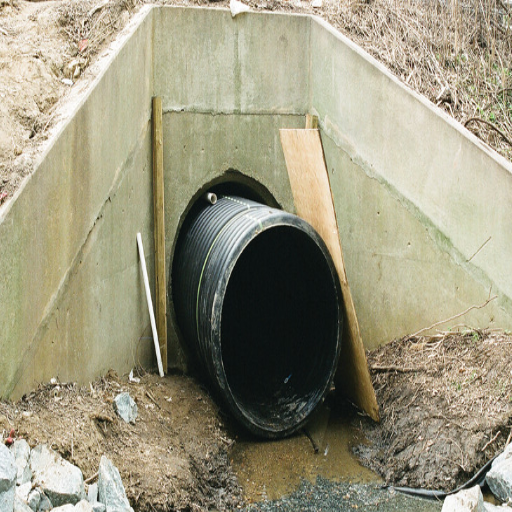
Materials Used in Sliplining
For every project, I select materials as per its structural requirements and operational needs. While High-Density Polyethylene (HDPE), Glass Reinforced Plastic (GRP), and Polyvinyl Chloride (PVC) are the standard options used for the liners, specific alternative materials can be used in the slip-lining procedure.
- HDPE: Its usefulness stems from its flexibility, chemical resistivity, and robustness. This material works exceptionally well in coping with small deformations in the host pipe, as well as with different pressure ratings (generally up to 160 psi, depending on the grade of the pipe).
- PVC: Along with its smooth internal surface, PVC’s rigidity is perfect for minimizing friction losses in pressurized systems. In addition to this, PVC pipes can withstand pressure ranging from 200 psi baseline which makes them popular in a variety of industries.
- GRP: A high strength-to-weight ratio, plus high corrosion resistance, makes Glass Reinforced Plastic invaluable. These properties make it perfect for environments where chemical exposure, as well as high mechanical loads, are a concern.
To maximize functional requirements, an operating environment, and the physical condition of the host pipe, each material is rigorously scrutinized. The correct allocation of tailored materials enables me to maximize both the cost-effectiveness and operational integrity of the slip-lining project.
Challenges in the Sliplining Process
The sliplining procedure is precise, but like other methods, it has obstacles that must be dealt with to achieve a satisfactory conclusion. This includes the challenge of accurately choosing, positioning, and installing the liner pipe so that it fits the geometry of the host pipe. Acceptable variances in these geometric relations can lead to gaps or ineffective loads at best, and failure at worst.
A second critical challenge includes controlling the hydraulic capacity of the system. As the pipe’s internal diameter is decreased with slip lining, the flow capacity may need to be monitored. In addition, flow measurements have to be conducted using Manning’s coefficient and Reynolds number to ensure that a decrease in the cross-sectional area won’t be overly burdensome for the hydraulics of the system, irrespective of how much performance loss there might be.
In addition, care must be exercised in the insertion of the pipe to not exceed the bending and tensile stresses that would damage the liner pipe’s material. Standards using acceptable limits of bend radius and the material’s tensile strength must be adhered to, such as ASTM D2992 of GRP pipes. Sufficient lubrication and appropriate alignment of the components must be applied to avoid excessive forces that might alter the lower end of the liner’s structural integrity.
In the end, the liner segments must be leakproof at operational pressures. As with the previous examples, butt-fusion welding or mechanical coupling needs to be evaluated for pipeline systems operating at 75 psi to 250 psi.
These obstacles are best tackled systematically through planning, modeled, and engineering standard compliance to ensure the effectiveness and durability of slip-lining endeavors.
Why Choose Sliplining Over Traditional Pipe Replacement?
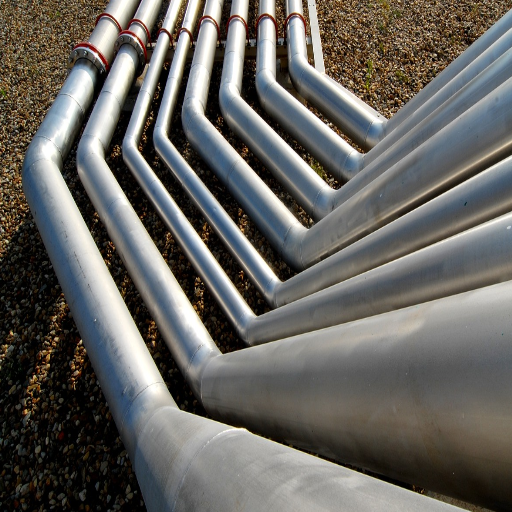
Cost-Effectiveness of Sliplining
When evaluating the cost-effectiveness of slip lining compared to traditional pipe replacement, several critical parameters highlight its advantages. First, slip lining significantly reduces excavation requirements, which directly lowers labor and equipment costs. Traditional replacement often necessitates extensive trenching, driving up both material and time expenditures.
Additionally, slip lining minimizes surface restoration expenses. For pipelines located beneath roads or urban infrastructures, this methodology avoids the complete removal and reconstruction of the surface, yielding substantial savings, particularly in densely populated or highly developed areas. Operational downtime is another area where slip lining excels; because the process is less invasive and faster to implement, service disruptions are kept to a minimum, reducing losses.
From a technical perspective, slip lining can accommodate pipes operating at pressures from 75 psi to 250 psi with proper material selection, such as high-density polyethylene (HDPE) or fiberglass-reinforced materials. These materials are selected based on their strength, flexibility, and resistance to corrosion, ensuring long-term durability and operational integrity. Furthermore, the expense associated with welding or coupling methods, like butt-fusion welding or mechanical fittings, is offset by their capacity to provide seamless, leak-proof connections essential for maintaining the system’s efficiency.
In conclusion, slip lining’s cost advantage stems from reduced excavation, minimized restoration costs, shorter project timelines, and enhanced material performance, all of which are justified through the outlined technical considerations.
Minimizing Excavation and Disruption
To reduce a burdensome amount of excavation work and minimize disruption, I recommend the use of trenchless rehabilitation approaches such as slip lining. This method replaces the traditional method of extensive trench excavation, thereby protecting surface assets like roads, sidewalks, and landscaping. Sliplining is technically defined as pulling or pushing a new smaller diameter pipe into the existing pipeline which reduces the overall disruption footprint.
- Existing Pipe Diameter: A new pipe would usually have a smaller outer diameter (OD) than the old pipe to enable insertion. For example, this reduction would usually lie between 10 and 15 percent of the original pipeline OD.
- Pulling Force: The force F required to install the new pipe should consider the steps needed to prevent material deformation and should be valued depending on the pipe material and length.
- Material Specifications: High-density polyethylene (HDPE) is often chosen because of its flexibility and strength, and the fact that it is highly resistant to corrosion ensures that it will integrate seamlessly with the host pipeline.
By following these measures, it is possible to implement effective pipeline rehabilitation with little impact on the community and the environment.
What Are the Key Applications of Sliplining in Trenchless Technologies?
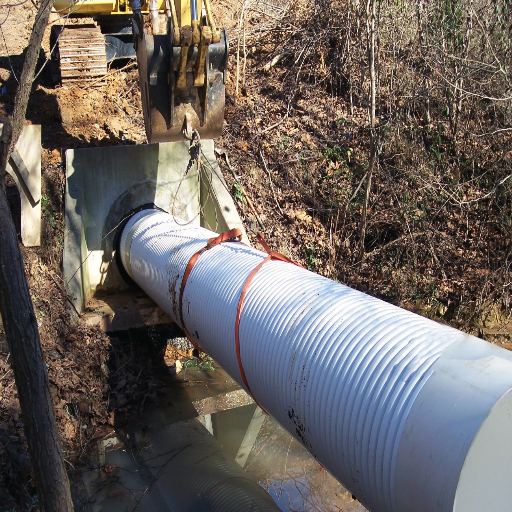
Sliplining in Sewer and Water Mains
Sliplining is effective in augmenting water and sewer pipelines because it helps in restoring the functionality of the pipes. This method is effective in treating leakage and structural failures in the pipelines with minimal excavation and site disturbance.
- Host Pipe Condition Assessment: Examination of the internal diameter, ovality, and condition of the existing pipe needs to be done to determine its suitability.
- Pipe Material Selection: HDPE is quite popular owing to its low coefficient of friction, anti-corrosive properties, and capability to resist high pressures in water mains and sewer system chemicals.
- Hydraulic Capacity: The smooth inner surface of the new pipe must compensate for the potential reduction of flow area caused by the insertion of a smaller pipe.
- Insertion Lengths: Ranges for segments are on average from 300 to 500 meters, based on the pulling forces available and the strength of the material being used for the pipe.
- Jointing Method: Heat fusion or butt welding accomplishes the watertight joints that prevent leakage, which is essential for pipe joints.
The refinement of obsolete infrastructure with the use of this approach contributes to the increased life of the structures while reducing the impact on the residents.
Using Sliplining for Corrosion and Structural Integrity
Sliplining significantly reduces corrosion rates and improves the aging pipeline’s structural conditions without compromising cost and disruption activities.
- Corrosion Resistance: The most common inserted pipe is made of high-density polyethylene (HDPE) or other similar materials. This pipe demonstrates good chemical resistance, is non-reactive, and therefore does not corrode. HDPE pipes are non-corrosive which bestows its long-term utility in environments containing aggressive chemicals like wastewater or industrial pipelines.
- Structural Strength: When installed correctly, HDPE pipes have a great tensile strength-to-weight ratio making them able to support external loads effectively, and assuming the rehabilitated pipe is installed properly, the soil and traffic loads can be sustained without compromising the structure of the pipe.
- Wall Thickness (SDR – Standard Dimension Ratio): The selection of the pipe is based on the expected internal pressure and external load. The pipes with lower SDR are better able to deal with higher pressures, and the most common allowable SDR values are between 17 and 26. Where upper SDR signifies lower strength and correspondingly thinner walls.
- Jointing Techniques (Butt Welding/Heat Fusion): JT-BW and Heat fusion jointing techniques where pipe ends are joined give the pipe segments greater resistance to leakage at junctions under variable pressure ranges and operating conditions, as the most common cause of piping failure is increased joint leakages under variable pressure and temperature ranges.
- Flow Efficiency: The mitigated frictional losses as a result of the inlet area of the HDPE pipe’s surface smoothening leads to the enhancement of the flow characteristics. This is further supported by the perforning coefficient of the material, such as the Hazen-Williams which is normally 150 for HDPE. These indicate the improved flow phenomena.
By attending to the selection of materials and technical specifications, it is possible to employ slip lining into the pipeline systems to tackle the problems of corrosion and structural degradation while significantly reducing the level of excavation of the surrounding area and social disturbance.
How Does Sliplining Compare to CIPP Lining?
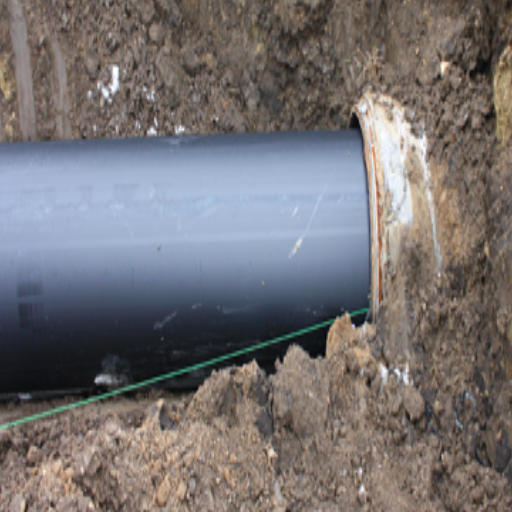
Differences in Installation Methods
The variation between slip lining and CIPP (Cured-In-Place Pipe) relies on the methodology of construction protocols, installation, as well as materials employed. Sliplining entails introducing a prefabricated pipe, typically crafted from HDPE, into the existing pipeline and cementing the annular space in place. Conversely, CIPP utilizes a resin-saturated liner that is cured in place with heated steam, boiling water, or ultraviolet rays to form a jointless pipe within the existing host pipe.
- Material Properties: With Sliplining, The use of HDPE pipes is standard, which have well-defined parameters such as tensile strength (20-37 MPa)with a high degree of flexibility. CIPP relies on resin systems in pipes which have their parameters defined in multi-cured components with compressive strength usually greater than 50 MPA.
- Thickness Impact: Sliplining results in a decrease in the diameter of the hose by the thickness of the inserted pipe which can be anywhere from 5 mm to 50mm depending on the design. CIPP Lining on the other hand will certainly always add value between 3 mm- 15mm depending on the condition of the resin and host pipe.
- Host Pipe Condition: Sliplining entails that the host pipe is circle-shaped without any substantial deformation. This is due to the rigid nature of the HDPE pipe. However, CIPP can cope with more hostile and random shapes within the pipeline.
- Time Needed for Installation: Cures Time: While Sliplining has quicker installation processes as it has almost no curing time, CIPP has long curing times depending on the kind of resin used and the environment.
In any case, both methods have proven to be useful and effective in rehabilitating pipelines. However, the selection is influenced by pipeline geometry and capacity, as well as the level of structural damage.
Advantages of Sliplining Over CIPP
- Cost Efficiency: Since there is less material needed and labor to complete the job can be reduced, slip lining is more cost-effective than CIPP. Installation costs are considerably lower since the pre-fabricated HDPE pipes for slip lining do not require the time-consuming processes of resin saturation and curing.
- Installation Speed: Sliplining speeds of installation of pipelines because the curing stages are eliminated. The preformed pipe is inserted into the host pipe directly. This is extremely beneficial for projects that need to be completed in a short period of time because the average installation time is lowered by 30-50% compared to CIPP.
- Durability and Accessibility of Materials: The HDPE pipes employed in sliplining are certainly some of the most durable because they resist corrosion, chemicals, and abrasion for long periods of time. Considering this guarantee, these pipes have become highly demanded as they come in different diameters and wall thicknesses which makes them reliable for different infrastructure projects.
- Structural Integrity: The pipes made from HDPE are rigid, which helps the pipes handle the structural integrity of the host pipe. This is especially useful when the host pipe is moderately deteriorated. In addition, wall thicknesses of 5 mm to 50 mm provide strong mechanical support, which helps maintain the structural integrity and reduces the probability of future failures.
- Minimal Dependence on Host Pipe Condition: The CIPP method is less effective when dealing with irregularly shaped structures because there is little to no bonding that holds the whole structure together. The shape of the HDPE pipe only depends on the shape of the host pipe because it needs to be dull for there to be perfect insertion of the pipe. In this aspect, the technical requirements are significantly easier during preparation and installation.
When deciding between Sliplining and CIPP, it is crucial to consider the technical and operational of the specific pipeline project, including host pipe geometry, installation deadlines, budget constraints, and basic structural conditions.
Reference sources
Frequently Asked Questions (FAQs)
Q: What is slip lining in the context of trenchless pipe repair?
A: Sliplining is one of the oldest methods of trenchless pipe repair, which involves inserting a new pipe inside the existing host pipe. This method is used to restore the function of deteriorated pipelines without the need for extensive excavation.
Q: How does slip lining differ from cured-in-place pipe lining?
A: While slip lining involves inserting a new pipe into the host pipe, cured-in-place pipe lining uses a resin-soaked liner that is cured inside the original pipe to form a new, seamless pipe wall. Both are trenchless pipe repair methods, but they employ different techniques.
Q: What types of pipes can sliplining be used for?
A: Sliplining can be used for various types of piping systems, including water pipes, sewer pipes, and other utility conduits. It is suitable for both pressurized and non-pressurized pipelines.
Q: What are the advantages of using slip lining for pipe rehabilitation?
A: Sliplining offers several advantages, including minimal disruption to the surrounding environment, cost-effectiveness, and the ability to improve the structural integrity and flow capacity of the pipeline by reducing the pipe wall thickness.
Q: How is the new pipe inserted during the slip-lining process?
A: In slip lining, the new pipe is pulled or pushed into the host pipe starting at an insertion point. Once the new pipe is in place, the space between the two pipes is often grouted to secure the new pipe within the old.
Q: Can slip lining be used for all sizes of pipes?
A: Sliplining is generally used for a range of pipe sizes. However, the size of the new pipe inside the existing pipe must be carefully selected to ensure it fits properly and allows for adequate flow capacity.
Q: What is the role of sealing the ends in slip lining?
A: Sealing the ends of the new pipe within the host pipe is essential to prevent leakage and ensure the integrity of the trenchless pipe installation. This helps maintain consistent flow and prevents external contaminants from entering the piping system.
Q: Is slip lining suitable for all pipe repair situations?
A: While slip lining is effective for many situations, it may not be suitable for pipes with severe deformation or where the original pipe has collapsed. In such cases, other trenchless methods or full replacement may be necessary.
Q: How do the bell and spigot pipe relate to slip lining?
A: The bell and spigot pipe design, featuring a flared end and a straight end, can be used in slip lining to connect sections of the new pipe. This design helps in aligning and securing the pipe segments inside the host pipe.
Q: What is the typical lifespan of a pipeline rehabilitated using slip lining?
A: A pipeline rehabilitated using slip lining can last several decades, often extending the service life of the original pipe by 50 years or more, depending on the materials used and the environmental conditions it is subjected to.



